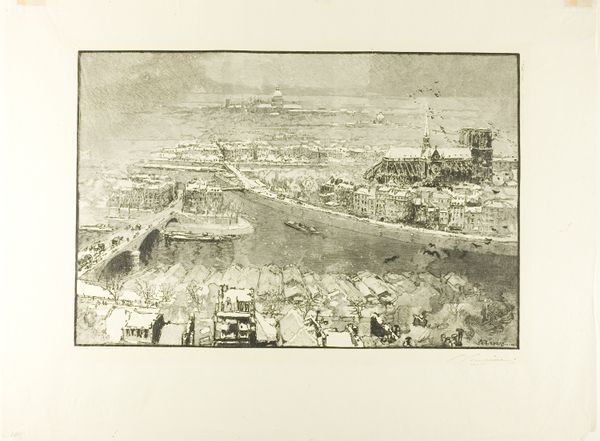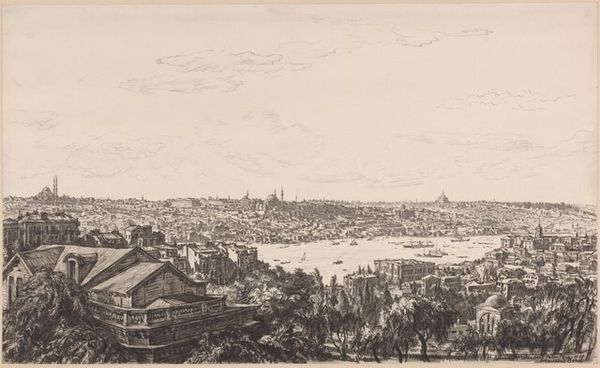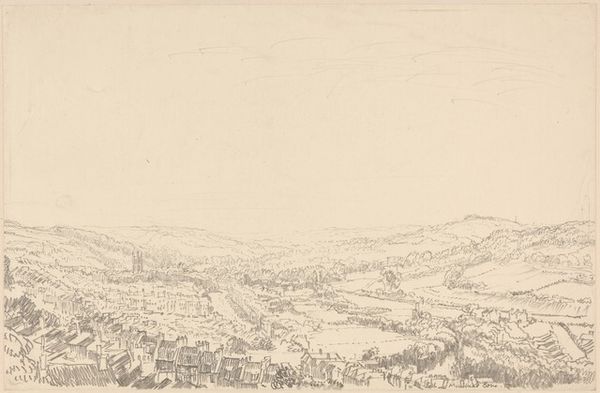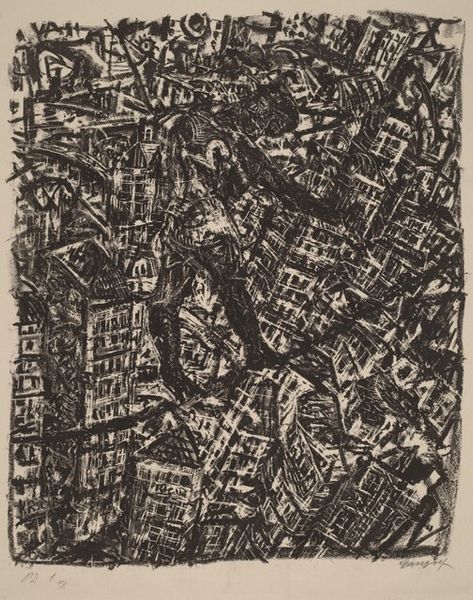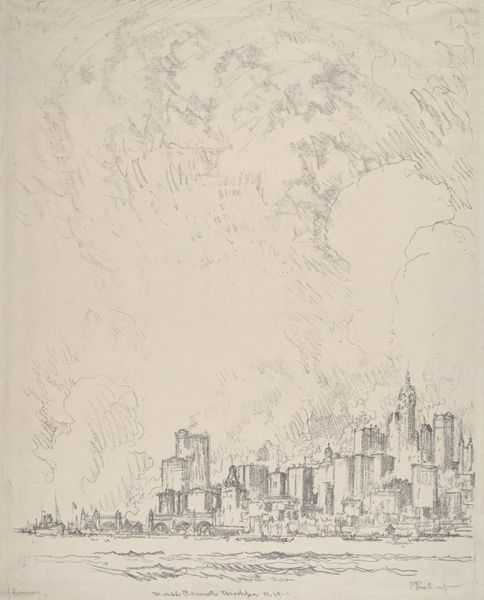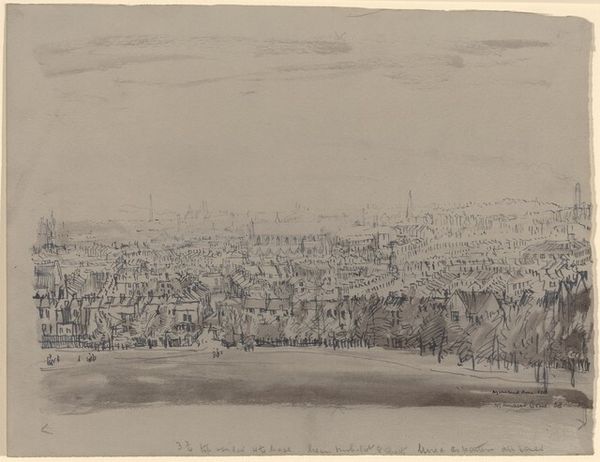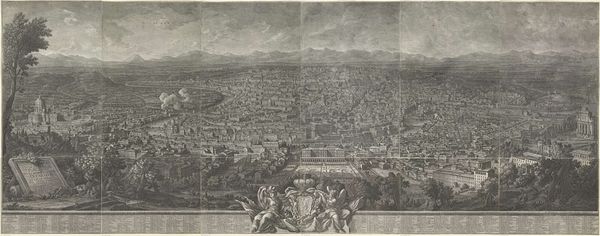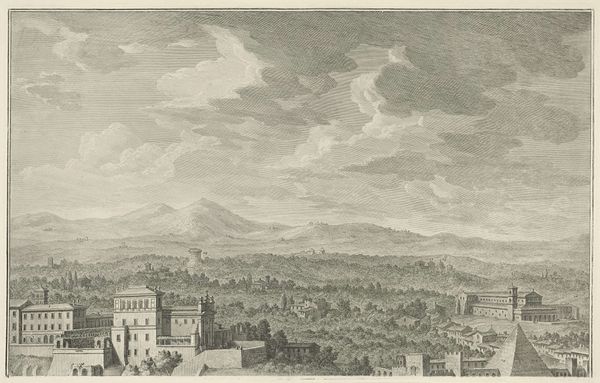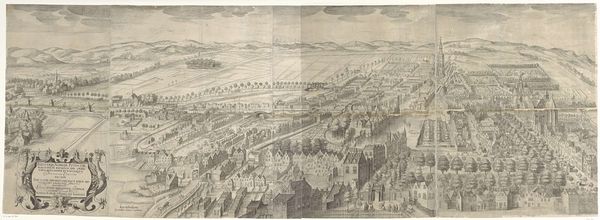
Dimensions: height 692 mm, width 445 mm
Copyright: Rijks Museum: Open Domain
Curator: Let's turn our attention to Giuseppe Vasi’s "Panorama van de stad Rome," created around 1765. It’s an engraving, offering an expansive view of Rome. Editor: The initial impression is overwhelmingly dense. It's a tapestry of rooftops, seemingly stretching into infinity. There’s a distinct absence of people; it feels strangely still and observant. Curator: Consider that the lack of figures might reflect the engraver's position relative to power. Think of how representations of cities served political purposes, asserting dominion, ownership, and visual strategies of colonial endeavors and the construction of national identities. This vantage point suggests a consolidation of control. What are we, as viewers, doing by adopting it? Editor: And within that tapestry of roofs, the towers and domes of churches reach skyward. They become beacons of the city’s sacred identity, don't they? They signal a continuity of faith and power structures, a layering of spiritual iconography onto the very bones of the city. The engraving reminds us of Rome's symbolic weight, from pagan empire to Christian capital. The arrangement and the details are speaking of a desire to display power with faith. Curator: Absolutely. Further, looking at Vasi's historical context, this piece emerged during the height of the Grand Tour, when wealthy Europeans traveled to Italy to immerse themselves in classical culture. Works like these then became popular souvenirs that reinforced the cultural dominance that Europe imposed upon itself, almost acting as a shorthand way of telling personal historical narratives for the tourist. What do we buy, display, and bring home with us as visitors? Editor: I'm also captivated by how the detail gives way to vagueness as the eye moves towards the horizon, with these blurred mountains. Almost a depiction of the city becoming an abstraction, turning the city into a mental symbol itself. The mind wanders at this view. Curator: The print's ability to evoke those varied and sometimes oppositional readings certainly testifies to its strength. It makes us reconsider how cityscapes are both visual documents and cultural artifacts—serving many agendas. Editor: Agreed, it layers both personal interpretation and societal messaging. A powerful way to spark engagement with history, using Rome’s urban landscape as a focus.
Comments
No comments
Be the first to comment and join the conversation on the ultimate creative platform.



